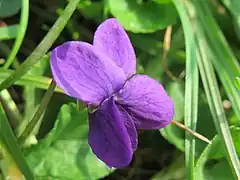
| Flowering plant families (APG IV) | |||||
|---|---|---|---|---|---|
|
|
|||||
| Early-diverging flowering plants | |||||
| Monocots: Alismatids • Commelinids • Lilioids | |||||
|
|
|||||
Eudicots
|
The COM clade consists of, and is named for, three orders of flowering plants: Celastrales, Oxalidales and Malpighiales.[lower-alpha 1] A subgroup of the rosids, it is divided into 45 families of trees, shrubs, vines and herbaceous perennials and annuals.[4][5]
Coca leaves containing small amounts of cocaine have been chewed as a stimulant for thousands of years in the Andes.[6] Cassava crops provide a substantial source of carbohydrates in the tropics.[7] Bruguiera, Rhizophora and other mangroves are planted to protect coasts from storms and anchor beach sand.[8] A single rootstock that supports a grove of quaking aspen may be the world's oldest living individual plant, at around 80,000 years.[9] Hybrids of the wild pansy (Viola tricolor) and other species of the violet family are grown as ornamentals, even in temperate winters.[10]
Glossary
From the glossary of botanical terms:
- annual: a plant species that completes its life cycle within a single year or growing season
- basal: attached close to the base (of a plant or an evolutionary tree diagram)
- climber: a vine that leans on, twines around or clings to other plants for vertical support
- deciduous: falling seasonally, as with bark, leaves or petals
- glandular hair: a hair tipped with a secretory structure
- herbaceous: not woody; usually green and soft in texture
- perennial: not an annual or biennial
- succulent (adjective): juicy or fleshy
- unisexual: of one sex; bearing only male or only female reproductive organs
- woody: hard and lignified; not herbaceous[11]
The APG IV system is the fourth in a series of plant taxonomies from the Angiosperm Phylogeny Group.[2] In this system, Celastrales is basal within the COM clade.[12]
Families
| Family and a common name[13][lower-alpha 2] | Type genus and etymology[lower-alpha 3] | Total genera; global distribution | Description and uses | Order[4] | Type genus images |
|---|---|---|---|---|---|
| Achariaceae (chaulmoogra family)[15] | Acharia, for Erik Acharius (1757–1819)[16][17] | 31 genera, in the tropics[18][19] | Shrubs, trees and herbaceous plants with essentially unisexual flowers. Some species are harvested for their wood.[15][20] | Malpighiales | |
| Balanopaceae (pimplebark family)[21] | Balanops, from Greek for "acorn-like"[21] | 1 genus, from northeastern Australia to Fiji[18][22] | Unisexual evergreen shrubs and trees with lenticels, horizontal ruptures in the bark that allow gas exchange[18][21] | Malpighiales | .jpg.webp) Balanops australiana |
| Bonnetiaceae (cascarilla family)[23] | Bonnetia, for Charles Bonnet (1720–1793)[23][24] | 4 genera, in Southeast Asia and the tropics of the Americas[18][25] | Shrubs and trees with durable wood[20][23] | Malpighiales | _Nees_%2526_Mart._(2038118904).jpg.webp) Bonnetia stricta |
| Brunelliaceae (palo-bobo family)[26] | Brunellia, for Gabriele Brunelli (1728–1797), an Italian clergyman and botanist[26] | 1 genus, in the tropics of the Americas[26][27] | Evergreen trees[20][26] | Oxalidales | |
| Calophyllaceae (takamaka family)[28] | Calophyllum, from Greek for "beautiful leaves"[29][30] | 11 genera, in the tropics[18][31] | Evergreen trees that exude copious white or yellow sap. Mesua ferrea is one of the species called ironwood for its very sturdy heartwood.[28] | Malpighiales | |
| Caryocaraceae (souari-tree family)[32] | Caryocar, from Greek for "nut heart"[32][33] | 2 genera, in the tropics of the Americas[18][34] | Shrubs and trees, pollinated by bats. Caryocar yields edible nuts.[20][32] | Malpighiales | |
| Celastraceae (spindle family)[35] | Celastrus, from a Greek plant name[36][37][38] | 98 genera, worldwide[35][39] | Shrubs, trees, vines and herbaceous plants, some growing on other plants. The fruits or seeds of some species are edible.[35][40] | Celastrales | |
| Centroplacaceae (biku-biku family)[41] | Centroplacus, from Greek for "spurred and flat" (styles)[41][42][43] | 2 genera, in the Asian tropics and West Africa[41][44] | Evergreen trees, frequently with buttress roots[41] | Malpighiales | |
| Cephalotaceae (Albany-pitcherplant family)[45] | Cephalotus, from Greek for "head-like"[46] | 1 genus, found only in swamps in southwestern Australia[45][47] | Carnivorous evergreen herbaceous perennials. Pitchers (modified leaves) trap and digest insects and other small animals.[45] | Oxalidales | |
| Chrysobalanaceae (cocoplum family)[48] | Chrysobalanus, from Greek for "gold acorns"[49][50] | 27 genera, in the tropics, mostly in the Americas[18][51] | Shrubs and trees, many with edible fruit[48][52] | Malpighiales | |
| Clusiaceae (mangosteen family)[53] | Clusia, for Carolus Clusius (1526–1609)[54][55] | 20 genera, in the tropics[18][56] | Mostly unisexual evergreen trees and shrubs. The creamy, sweet-and-sour fruit of the mangosteen is grown commercially.[18][52][53] | Malpighiales | |
| Connaraceae (zebrawood family)[57] | Connarus, from a Greek plant name[57][58] | 12 genera, mostly in the African and Asian tropics[57][59] | Vines, shrubs and small trees. Fibrous vines of Agelaea are used to make rope.[57][60] | Oxalidales |  Connarus wightii |
| Ctenolophonaceae (litoh family)[61] | Ctenolophon, from Greek for "comb hills"[61] | 1 genus, in West Africa and Southeast Asia[18][62] | Trees with buttress roots[60][61] | Malpighiales | — |
| Cunoniaceae (butterspoon-tree family)[63] | Cunonia, for Johann Christian Cuno (b. 1708)[64][65] | 27 genera, mostly scattered in the Southern Hemisphere[63][66] | Mostly evergreen shrubs and trees. Some Davidsonia and Schizomeria fruits are edible.[20][63] | Oxalidales | |
| Dichapetalaceae (ratbane family)[67] | Dichapetalum, from Greek for "two-part petals"[67][68] | 3 genera, in the tropics, subtropical India and southern Africa[18][69] | Shrubs, trees and woody vines[52][67] | Malpighiales | |
| Elaeocarpaceae (fairy-petticoats family)[70] | Elaeocarpus, from Greek for "olive (or oil) fruit"[71][72][73] | 12 genera, mostly in the tropics and subtropics of Asia and the Americas[70][74] | Evergreen and partly deciduous shrubs and trees. Fruits of some Aceratium and Elaeocarpus species are edible.[20][70] | Oxalidales | |
| Elatinaceae (waterwort family)[75] | Elatine, from a Greek plant name[71][76] | 2 genera, scattered worldwide[18][77] | Herbaceous plants and subshrubs in aquatic or damp habitats[18][60][75] | Malpighiales | |
| Erythroxylaceae (coca family)[6] | Erythroxylum, from Greek for "red wood"[78][79] | 4 genera, in the tropics, mostly in the Americas[18][80] | Trees and shrubs, some with opaque sap. Coca leaves were a trading commodity for the Incas.[6][20] | Malpighiales | |
| Euphorbiaceae (spurge family)[7] | Euphorbia, from a Greek plant name[81][82][83] | 227 genera, around the world[18][84] | Trees, shrubs, herbaceous plants and a few vines, usually unisexual, and frequently succulent with opaque sap. Members of this family are grown for food, as ornamentals, and for their wood, latex and seed oil. The latex of Hevea brasiliensis is the most common source of natural rubber.[7][20] | Malpighiales | |
| Euphroniaceae (euphronia family)[85] | Euphronia, for Euphronis, an ancient writer on cultivation[86] | 1 genus, in South America[18][87] | Shrubs and trees with spidery hairs[20][85] | Malpighiales |  Euphronia hirtelloides |
| Goupiaceae (kopi family)[88] | Goupia, from a Ndyuka plant name[88] | 1 genus, in Central and South America[18][88][89] | Evergreen trees that bioaccumulate aluminium[20][88] | Malpighiales | |
| Huaceae (Cameroon-garlic family)[90] | Hua, for Henri Hua (1861–1919), a French botanist[91][92] | 2 genera, in tropical Africa[90][93] | Shrubs and trees. Leaves, seeds and stems are used as a garlicky seasoning.[90] | Oxalidales | 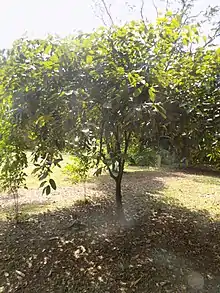 Afrostyrax lepidophyllus (type genus not shown) |
| Humiriaceae (umiri family)[94] | Humiria, from a Carib plant name[94][95] | 8 genera, mostly in South and Central America[18][96] | Evergreen shrubs and trees, many with scented wood. The seed oils are used in the Amazon rainforest.[60][94] | Malpighiales | Humiria_balsamifera_20-01-2013.jpg.webp) Humiria balsamifera |
| Hypericaceae (St.-John's-wort family)[97] | Hypericum, from a Greek plant name[97][98] | 6 genera, around the world[18][99] | Shrubs and herbaceous plants, often with yellow or purple resin. Some species are grown as ornamentals.[97][100] | Malpighiales | |
| Irvingiaceae (ogbono-nut family)[101] | Irvingia, for Edward Irving (1816–1855)[102][103] | 4 genera, in the African and Asian tropics[18][104] | Evergreen trees, some as tall as 90 m (300 ft), with very sturdy wood. Nutritious Irvingia seeds are grown as a cash crop in Cameroon.[52][101] | Malpighiales |  Irvingia smithii |
| Ixonanthaceae (twentymen-tree family)[105] | Ixonanthes, from Greek for "sticky flowers"[106][107] | 4 genera, mostly in the tropics[18][105][108] | Shrubs and trees[100][105] | Malpighiales | |
| Lacistemataceae (cemp-wood family)[109] | Lacistema, from Latin for "torn" + Greek for "stamens"[109][110] | 2 genera, in the tropics of the Americas[109][111] | Small trees and shrubs, most with hairs on the new branches[20][109] | Malpighiales | .jpg.webp) Lacistema hasslerianum |
| Lepidobotryaceae (snail-cedar family)[112] | Lepidobotrys, from Greek for "scale clusters"[112][113] | 2 genera, in the tropics of the Americas and Central Africa[112][114] | Unisexual trees[60][112] | Celastrales | |
| Linaceae (flax family)[115] | Linum, from a Latin plant name[116][117][118] | 9 genera, mostly in the tropics, with some species extending into temperate zones[18][115][119] | Trees, shrubs, woody vines and herbaceous plants. Flax has been grown for over 7,000 years for its seed oil and as a source of linen.[60][115] | Malpighiales | |
| Lophopyxidaceae (koteb family)[120] | Lophopyxis, from Greek for "crested box" (on the fruit)[120] | 1 genus, in the Malay Peninsula, the Malay Archipelago and Melanesia[18][121] | Woody vines, shrubs and small trees with tendrils and unisexual flowers[18][120] | Malpighiales | — |
| Malpighiaceae (acerola family)[122] | Malpighia, for Marcello Malpighi (1628–1694)[122][123] | 77 genera, in the tropics and subtropics, mostly in the Americas[18][124] | Trees, shrubs, vines and herbaceous perennials. Acerola cherries (Malpighia emarginata) are grown commercially in the tropics, mainly in Brazil.[100][122] | Malpighiales | |
| Ochnaceae (Mickey-Mouse-plant family)[125] | Ochna, from a Greek plant name[126][127] | 36 genera, in the tropics, mainly in Brazil[18][128] | Evergreens, mostly shrubs and trees. Ochna, the Mickey-Mouse plant, is often grown in tropical gardens. Lophira is grown for its seed oil.[52][125] | Malpighiales | 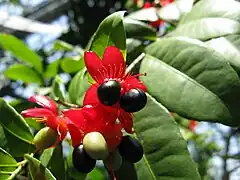 Ochna thomasiana |
| Oxalidaceae (wood-sorrel family)[129] | Oxalis, from a Greek plant name meaning "sharp"[129][130][131][132] | 5 genera, worldwide[129][133] | Trees, shrubs, vines and mostly perennial herbaceous plants, with some succulents. Oxalis tuberosa is a mainly South American food crop, similar to potatoes. Carambola is a juicy tropical fruit.[100][129] | Oxalidales | |
| Pandaceae (kana-nut family)[134] | Panda, for Paul Panda Farnana (1888–1930)[134][135] | 3 genera, in the African and Asian tropics[18][136] | Unisexual shrubs and trees. Panda oleosa is grown for seed oil in West Africa.[18][60][134] | Malpighiales | |
| Passifloraceae (passionfruit family)[137] | Passiflora, from Latin for "passion flowers"[138][139][140] | 30 genera, mostly in the tropics[18][141] | Small trees, shrubs, herbaceous plants and vines with tendrils, frequently with glandular hairs. Maracuja is cultivated for its fruit. Passiflora (especially P. caerulea), Turnera and Piriqueta are grown as ornamentals.[60][137] | Malpighiales | |
| Peraceae (lightning-bush family)[142] | Pera, from Greek for "pouch" (on the fruit)[142][143] | 5 genera, in Africa, the tropics of the Americas, and southern, southwestern and southeastern Asia[142][144] | Herbaceous perennials, shrubs and trees, usually unisexual[20][142] | Malpighiales | .jpg.webp) Pera glabrata |
| Phyllanthaceae (leafflower family)[145] | Phyllanthus, from Greek for "leaf-flowers"[146][147] | 58 genera, mostly in the Malay Archipelago[18][148] | Mostly shrubs, trees and herbaceous plants, with some climbers, succulents and aquatic species. Some plants have edible fruit, consumed locally.[20][145] | Malpighiales | |
| Picrodendraceae (hollyspurge family)[149] | Picrodendron, from Greek for "bitter tree"[149][150] | 25 genera, in the tropics, mostly south of the equator[18][151] | Shrubs and trees with unisexual flowers. Lebombo ironwood provides durable wood for floors and structural beams in parts of Africa.[20][149] | Malpighiales | 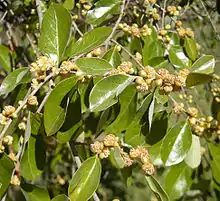 Petalostigma pubescens (type genus not shown) |
| Podostemaceae (riverweed family)[152] | Podostemum, from Greek for "foot stamens"[153][154] | 51 genera, globally in the tropics and warm temperate zones[18][155] | Herbaceous aquatic plants with anchoring roots in fast-flowing streams, rapids and waterfalls, many resembling seaweed, lichens or moss. Dried Rhyncholacis is used as a peppery seasoning.[18][60][152] | Malpighiales | |
| Putranjivaceae (childlife-tree family)[156] | Putranjiva, from a Sanskrit plant name[156][157] | 2 genera, in the tropics and subtropics, mainly in Africa and the Malay Archipelago[18][158] | Mostly unisexual shrubs and trees, with hairy, fleshy fruit. Putranjiva is widely grown in the tropics, as an ornamental and for its seed oil.[20][156] | Malpighiales | .jpg.webp) Putranjiva roxburghii |
| Rafflesiaceae (corpse-flower family)[159] | Rafflesia, for Stamford Raffles (1781–1826)[159][160] | 3 genera, mainly in Southeast Asia[18][161] | Parasitic plants without chlorophyll, usually with unisexual flowers. They flower infrequently, remaining hidden most of the time inside a host plant. Rafflesia arnoldii can grow up to 1 m (3 ft 3 in) in diameter, a record size for flowers.[18][52][159] | Malpighiales | |
| Rhizophoraceae (mangrove family)[8] | Rhizophora, from Greek for "root-bearing"[8][162] | 15 genera, in the tropics[18][163] | Evergreen shrubs and trees, many with aerial roots adapted to shallow water[8][100] | Malpighiales | |
| Salicaceae (willow family)[9] | Salix, from a Latin plant name[164][165][166] | 54 genera, in tropical, temperate and arctic climates[9][18][167] | Trees, shrubs and partly herbaceous plants, most with unisexual flowers. Salix arctica, a willow, grows at the northern limit for vascular plants (83° N). Dovyalis caffra is grown as a hedge with edible fruit in the tropics. The bark of the white willow, Salix alba, contains salicin (related to aspirin), and was used traditionally as a painkiller in Europe.[9][100] | Malpighiales | |
| Trigoniaceae (triangle-vine family)[168] | Trigonia, from Greek for "triangular" (fruit)[168][168][169] | 4 genera, in the tropics of the Americas, the Malay Archipelago and Madagascar[18][170] | Shrubs, trees and woody vines. Trigoniastrum hypoleucum provides high-quality wood.[20][168] | Malpighiales | _Lleras_-_Flickr_-_Alex_Popovkin%252C_Bahia%252C_Brazil_(1).jpg.webp) Trigonia nivea |
| Violaceae (violet family)[10] | Viola, from a Latin plant name[171][172][173] | 24 genera, around the world[18][174] | Small trees, shrubs, vines and herbaceous plants. V. odorata is an ingredient in perfumes and in jellies, chocolates and other sweets.[10][100] | Malpighiales | |
See also
Notes
- ↑ The taxonomy (classification) in this list follows Plants of the World (2017)[1] and APG IV.[2] Total counts of genera for each family come from Plants of the World Online (POWO).[3] (See the POWO license.) Extinct taxa are not included. A clade of plants is a subgroup consisting of all the descendants of a theoretical ancient ancestor.
- ↑ Each family's formal name ends in the Latin suffix -aceae and is derived from the name of a genus that is or once was part of the family.[14]
- ↑ Some plants were named for naturalists (unless otherwise noted).
Citations
- ↑ Christenhusz, Fay & Chase 2017.
- 1 2 Angiosperm Phylogeny Group 2016.
- ↑ POWO.
- 1 2 Stevens 2023, Summary of APG IV.
- ↑ Christenhusz, Fay & Chase 2017, pp. 10, 292–341.
- 1 2 3 Christenhusz, Fay & Chase 2017, pp. 305–306.
- 1 2 3 Christenhusz, Fay & Chase 2017, pp. 332–336.
- 1 2 3 4 Christenhusz, Fay & Chase 2017, pp. 304–305.
- 1 2 3 4 Christenhusz, Fay & Chase 2017, pp. 329–330.
- 1 2 3 Christenhusz, Fay & Chase 2017, pp. 324–325.
- ↑ Christenhusz, Fay & Chase 2017, pp. 638–670.
- ↑ Christenhusz, Fay & Chase 2017, pp. 10.
- ↑ Christenhusz, Fay & Chase 2017, pp. 292–341.
- ↑ ICN, art. 18.
- 1 2 Christenhusz, Fay & Chase 2017, pp. 323–324.
- ↑ Burkhardt 2018, p. A-3.
- ↑ USDA, Achariaceae, Type.
- 1 2 3 4 5 6 7 8 9 10 11 12 13 14 15 16 17 18 19 20 21 22 23 24 25 26 27 28 29 30 31 32 33 34 35 36 37 38 39 40 Kubitzki 2013, pp. 1–4.
- ↑ POWO, Achariaceae.
- 1 2 3 4 5 6 7 8 9 10 11 12 13 14 15 16 POWO, Neotropikey.
- 1 2 3 Christenhusz, Fay & Chase 2017, pp. 318–319.
- ↑ POWO, Balanopaceae.
- 1 2 3 Christenhusz, Fay & Chase 2017, p. 308.
- ↑ USDA, Bonnetiaceae, Type.
- ↑ POWO, Bonnetiaceae.
- 1 2 3 4 Christenhusz, Fay & Chase 2017, p. 301.
- ↑ POWO, Brunelliaceae.
- 1 2 Christenhusz, Fay & Chase 2017, pp. 310–311.
- ↑ Stearn 2002, p. 77.
- ↑ IPNI, Calophyllaceae, Type.
- ↑ POWO, Calophyllaceae.
- 1 2 3 Christenhusz, Fay & Chase 2017, pp. 313–314.
- ↑ IPNI, Caryocaraceae, Type.
- ↑ POWO, Caryocaraceae.
- 1 2 3 Christenhusz, Fay & Chase 2017, pp. 293–295.
- ↑ Coombes 2012, p. 87.
- ↑ Stearn 2002, p. 86.
- ↑ IPNI, Celastraceae, Type.
- ↑ POWO, Celastraceae.
- ↑ POWO, Flora of Somalia.
- 1 2 3 4 Christenhusz, Fay & Chase 2017, pp. 315–316.
- ↑ Quattrocchi 2000, p. 474.
- ↑ USDA, Centroplacaceae, Type.
- ↑ POWO, Centroplacaceae.
- 1 2 3 Christenhusz, Fay & Chase 2017, pp. 300–301.
- ↑ Quattrocchi 2000, p. 479.
- ↑ POWO, Cephalotaceae.
- 1 2 Christenhusz, Fay & Chase 2017, pp. 321–322.
- ↑ Stearn 2002, p. 93.
- ↑ IPNI, Chrysobalanaceae, Type.
- ↑ POWO, Chrysobalanaceae.
- 1 2 3 4 5 6 POWO, Flora of Zambesiaca.
- 1 2 Christenhusz, Fay & Chase 2017, pp. 309–310.
- ↑ Burkhardt 2018, p. C-46.
- ↑ IPNI, Clusiaceae, Type.
- ↑ POWO, Clusiaceae.
- 1 2 3 4 Christenhusz, Fay & Chase 2017, p. 296.
- ↑ IPNI, Connaraceae, Type.
- ↑ POWO, Connaraceae.
- 1 2 3 4 5 6 7 8 9 POWO, Flora of West Tropical Africa.
- 1 2 3 Christenhusz, Fay & Chase 2017, pp. 303–304.
- ↑ POWO, Ctenolophonaceae.
- 1 2 3 Christenhusz, Fay & Chase 2017, pp. 298–299.
- ↑ Burkhardt 2018, p. C-75.
- ↑ IPNI, Cunoniaceae, Type.
- ↑ POWO, Cunoniaceae.
- 1 2 3 Christenhusz, Fay & Chase 2017, p. 320.
- ↑ IPNI, Dichapetalaceae, Type.
- ↑ POWO, Dichapetalaceae.
- 1 2 3 Christenhusz, Fay & Chase 2017, pp. 299–300.
- 1 2 Stearn 2002, p. 129.
- ↑ Christenhusz, Fay & Chase 2017, p. 300.
- ↑ IPNI, Elaeocarpaceae, Type.
- ↑ POWO, Elaeocarpaceae.
- 1 2 Christenhusz, Fay & Chase 2017, pp. 316–317.
- ↑ IPNI, Elatinaceae, Type.
- ↑ POWO, Elatinaceae.
- ↑ Stearn 2002, p. 135.
- ↑ IPNI, Erythroxylaceae, Type.
- ↑ POWO, Erythroxylaceae.
- ↑ Coombes 2012, p. 138.
- ↑ Stearn 2002, p. 136.
- ↑ IPNI, Euphorbiaceae, Type.
- ↑ POWO, Euphorbiaceae.
- 1 2 Christenhusz, Fay & Chase 2017, pp. 320–321.
- ↑ Burkhardt 2018, p. E-27.
- ↑ POWO, Euphroniaceae.
- 1 2 3 4 Christenhusz, Fay & Chase 2017, pp. 325–326.
- ↑ POWO, Goupiaceae.
- 1 2 3 Christenhusz, Fay & Chase 2017, pp. 295–296.
- ↑ Burkhardt 2018, p. H-63.
- ↑ USDA, Huaceae, Type.
- ↑ POWO, Huaceae.
- 1 2 3 Christenhusz, Fay & Chase 2017, pp. 322–323.
- ↑ IPNI, Humiriaceae, Type.
- ↑ POWO, Humiriaceae.
- 1 2 3 Christenhusz, Fay & Chase 2017, pp. 302–303.
- ↑ IPNI, Hypericaceae, Type.
- ↑ POWO, Hypericaceae.
- 1 2 3 4 5 6 7 POWO, Flora of Tropical East Africa.
- 1 2 Christenhusz, Fay & Chase 2017, p. 303.
- ↑ Burkhardt 2018, p. I-8.
- ↑ USDA, Irvingiaceae, Type.
- ↑ POWO, Irvingiaceae.
- 1 2 3 Christenhusz, Fay & Chase 2017, p. 338.
- ↑ Quattrocchi 2000a, p. 1325.
- ↑ IPNI, Ixonanthaceae, Type.
- ↑ POWO, Ixonanthaceae.
- 1 2 3 4 Christenhusz, Fay & Chase 2017, p. 328.
- ↑ IPNI, Lacistemataceae, Type.
- ↑ POWO, Lacistemataceae.
- 1 2 3 4 Christenhusz, Fay & Chase 2017, pp. 292–293.
- ↑ IPNI, Lepidobotryaceae, Type.
- ↑ POWO, Lepidobotryaceae.
- 1 2 3 Christenhusz, Fay & Chase 2017, pp. 337–338.
- ↑ Coombes 2012, p. 193.
- ↑ Stearn 2002, p. 192.
- ↑ IPNI, Linaceae, Type.
- ↑ POWO, Linaceae.
- 1 2 3 Christenhusz, Fay & Chase 2017, p. 314.
- ↑ POWO, Lophopyxidaceae.
- 1 2 3 Christenhusz, Fay & Chase 2017, pp. 317–318.
- ↑ IPNI, Malpighiaceae, Type.
- ↑ POWO, Malpighiaceae.
- 1 2 Christenhusz, Fay & Chase 2017, pp. 306–308.
- ↑ Stearn 2002, p. 221.
- ↑ IPNI, Ochnaceae, Type.
- ↑ POWO, Ochnaceae.
- 1 2 3 4 Christenhusz, Fay & Chase 2017, p. 297.
- ↑ Coombes 2012, p. 220.
- ↑ Stearn 2002, p. 227.
- ↑ IPNI, Oxalidaceae, Type.
- ↑ POWO, Oxalidaceae.
- 1 2 3 Christenhusz, Fay & Chase 2017, p. 302.
- ↑ IPNI, Pandaceae, Type.
- ↑ POWO, Pandaceae.
- 1 2 Christenhusz, Fay & Chase 2017, pp. 326–328.
- ↑ Coombes 2012, p. 225.
- ↑ Stearn 2002, p. 232.
- ↑ IPNI, Passifloraceae, Type.
- ↑ POWO, Passifloraceae.
- 1 2 3 4 Christenhusz, Fay & Chase 2017, pp. 330–331.
- ↑ USDA, Peraceae, Type.
- ↑ POWO, Peraceae.
- 1 2 Christenhusz, Fay & Chase 2017, pp. 340–341.
- ↑ Stearn 2002, p. 239.
- ↑ USDA, Phyllanthaceae, Type.
- ↑ POWO, Phyllanthaceae.
- 1 2 3 Christenhusz, Fay & Chase 2017, p. 339.
- ↑ IPNI, Picrodendraceae, Type.
- ↑ POWO, Picrodendraceae.
- 1 2 Christenhusz, Fay & Chase 2017, p. 311.
- ↑ Quattrocchi 2019, p. 2126.
- ↑ IPNI, Podostemaceae, Type.
- ↑ POWO, Podostemaceae.
- 1 2 3 Christenhusz, Fay & Chase 2017, p. 315.
- ↑ IPNI, Putranjivaceae, Type.
- ↑ POWO, Putranjivaceae.
- 1 2 3 Christenhusz, Fay & Chase 2017, pp. 331–332.
- ↑ IPNI, Rafflesiaceae, Type.
- ↑ POWO, Rafflesiaceae.
- ↑ IPNI, Rhizophoraceae, Type.
- ↑ POWO, Rhizophoraceae.
- ↑ Coombes 2012, p. 261.
- ↑ Stearn 2002, p. 265.
- ↑ IPNI, Salicaceae, Type.
- ↑ POWO, Salicaceae.
- 1 2 3 4 Christenhusz, Fay & Chase 2017, p. 319.
- ↑ USDA, Trigoniaceae, Type.
- ↑ POWO, Trigoniaceae.
- ↑ Coombes 2012, p. 303.
- ↑ Stearn 2002, p. 308.
- ↑ IPNI, Violaceae, Type.
- ↑ POWO, Violaceae.
References
- Angiosperm Phylogeny Group (2016). "An update of the Angiosperm Phylogeny Group classification for the orders and families of flowering plants: APG IV". Botanical Journal of the Linnean Society. 181 (1): 1–20. doi:10.1111/boj.12385.
- Burkhardt, Lotte (2018). Verzeichnis eponymischer Pflanzennamen – Erweiterte Edition [Index of Eponymic Plant Names – Extended Edition] (pdf) (in German). Berlin: Botanic Garden and Botanical Museum, Freie Universität Berlin. doi:10.3372/epolist2018. ISBN 978-3-946292-26-5. S2CID 187926901. Retrieved January 1, 2021. See the Creative Commons license.
- Christenhusz, Maarten; Fay, Michael Francis; Chase, Mark Wayne (2017). Plants of the World: An Illustrated Encyclopedia of Vascular Plants. Chicago, Illinois: Kew Publishing and The University of Chicago Press. ISBN 978-0-226-52292-0.
- Coombes, Allen (2012). The A to Z of Plant Names: A Quick Reference Guide to 4000 Garden Plants. Portland, Oregon: Timber Press. ISBN 978-1-60469-196-2.
- IPNI (2022). "International Plant Names Index". London, Boston and Canberra: Royal Botanic Gardens, Kew; Harvard University Herbaria & Libraries; and the Australian National Botanic Gardens. Retrieved December 20, 2022.
- Kubitzki, K. (2013). "Introduction to Malpighiales". In Kubitzki, K. (ed.). Flowering Plants. Eudicots: Malpighiales. Vol. XI. Berlin: Springer Science+Business Media. pp. 1–4. ISBN 978-3-642-39417-1.
- POWO (2019). "Plants of the World Online". London: Royal Botanic Gardens, Kew. Retrieved January 1, 2023. See their terms-of-use license.
- Quattrocchi, Umberto (2000). CRC World Dictionary of Plant Names, Volume I, A–C. Boca Raton, Florida: CRC Press. ISBN 978-0-8493-2675-2.
- Quattrocchi, Umberto (2000). CRC World Dictionary of Plant Names, Volume II, D–L. Boca Raton, Florida: CRC Press. ISBN 978-0-8493-2676-9.
- Quattrocchi, Umberto (2019) [2000]. CRC World Dictionary of Plant Names, Volume III, M–Q. Boca Raton, Florida: CRC Press. ISBN 978-0-367-44751-9.
- Stearn, William (2002). Stearn's Dictionary of Plant Names for Gardeners. London: Cassell. ISBN 978-0-304-36469-5.
- Stevens, P.F. (2023) [2001]. "Angiosperm Phylogeny Website". Missouri Botanical Garden. Retrieved January 2, 2023.
- Turland, N. J.; et al. (eds.). International Code of Nomenclature for algae, fungi, and plants (Shenzhen Code) adopted by the Nineteenth International Botanical Congress Shenzhen, China, July 2017 (electronic ed.). Glashütten: International Association for Plant Taxonomy. Retrieved February 25, 2022.
- "USDA, Agricultural Research Service, National Plant Germplasm System". Germplasm Resources Information Network (GRIN Taxonomy). Beltsville, Maryland: National Germplasm Resources Laboratory. 2022. Retrieved December 20, 2022.
.jpg.webp)
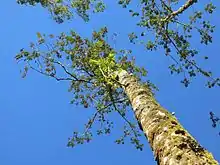

.jpg.webp)
.jpg.webp)
_(20394368832).jpg.webp)
.jpg.webp)
_01.jpg.webp)
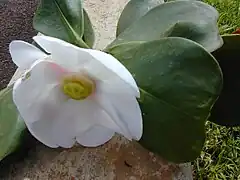

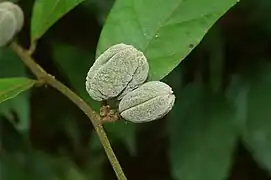

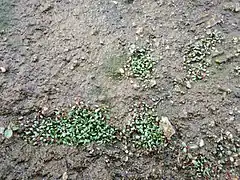
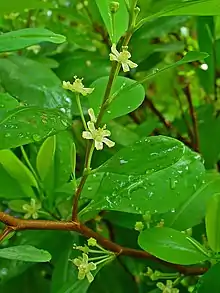
_-_Botanischer_Garten_-_Heidelberg%252C_Germany_-_DSC01386.jpg.webp)
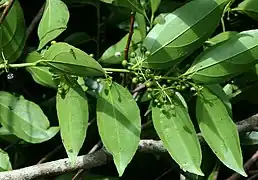
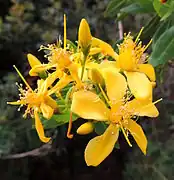
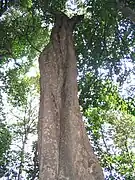
.png.webp)
_flower._Chapeltoun_North_Ayrshire.jpg.webp)
_flower.jpg.webp)



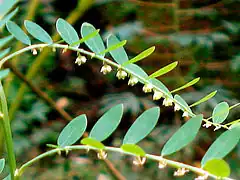
.jpg.webp)
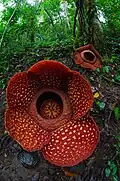
.jpg.webp)

